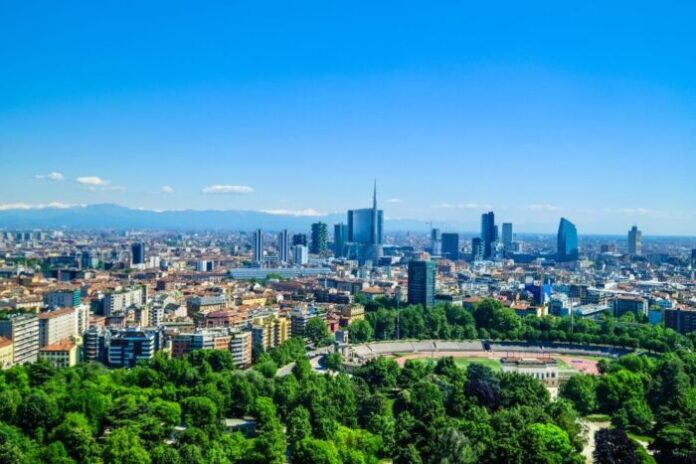
The increase in land use does not go hand in hand with population growth and in Italy cement is growing more than the population: in 2019 420,000 children are born and the now sealed soil is growing by another 57 km2 (57 million square meters) at the confirmed rate of 2 square meters per second. It is as if each new born Italian brought 135 square meters of concrete into the cradle.
The waste of soil continues to advance in the hydrogeological and seismic risk areas and between, the Italian cities, Sicily is the region with the highest percentage growth in the areas with medium hydraulic hazard. There is no lack of positive signs: Valle d’Aosta, with only 3 hectares of waterproofed territory in the last year, is the first Italian region close to the “Consumption of soil 0” objective and halves the amount of soil lost in one year per year. inside the protected areas.
This was confirmed by the data of the ISPRA SNPA Report “Land use in Italy 2020” presented live today by the Ripetta residence in Rome. The work, which analyzes the transformations of the soil over the years, in this edition is enriched with contributions from 12 Observatories of the Regions and autonomous Provinces, also thanks to the Soil4Life project. Soil consumption and population growth. There is therefore no link between population and new cement and we continue to witness the growth of artificial surfaces even in the presence of stabilization, in many cases even of decrease, of the population.
“Soil is a non-renewable resource and should not be wasted – says environment minister Sergio Costa – The data presented by Ispra tells us that today every newborn is born in Italy with a ‘cement dowry’ of 135 square meters. This is not the legacy we want to leave to our children and grandchildren. We must act immediately if we want to stop this process by reversing the course, focusing on urban regeneration, on the reuse of disused buildings that can become usable spaces for citizens, harshly contrasting any form of unauthorism that defiles the landscape by circumventing laws and safety standards “.
In 2019 the 57 million square meters of new construction sites and buildings are registered in a country that sees a decrease of over 120 thousand inhabitants in the same period. Each of these now has 355 m2 of built surfaces “available” (they were 351 in 2017 and 353 in 2018). Hydrogeological and seismic risk areas. Artificial coverage continues even in the most risky areas of the country: in 2019 10% of the areas with average hydraulic hazard P2 (with a return time between 100 and 200 years) and almost 7% of those classified as high hazard are now sealed P3 (with return time between 20 and 50 years).
Liguria is the region with the highest value of soil waterproofed in areas with hydraulic hazard (almost 30%). Cement also covers 4% of landslide risk areas, 7% of those with high seismic hazard and over 4% of those with very high hazard. Regions and Municipalities: Veneto, with +785 hectares, is the region that consumes the most soil in 2019 (although less than 2017 and 2018), followed by Lombardy (+642 hectares), Puglia (+625), Sicily (+ 611) and Emilia-Romagna (+404).
At the municipal level, Rome, with an increase of 108 hectares of artificial soil, is confirmed as the Italian municipality with the largest amount of land transformed in a year (reaching 500 hectares from 2012 to today), followed by Uta (Cagliari; +58 hectares in a year) and Catania (+48 hectares). It is better in Milan, Florence and Naples, with consumption below the hectare in the last 12 months (+125 hectares in the last 7 years in Milan, +16 in Florence and +24 in Naples in the same period). After the decrease in 2018, Turin is unable to confirm the positive trend and in the reference year, it starts building again, losing 5 hectares of natural soil.
Good news from the protected areas: in 2019 there were 61.5 hectares of compromised soil, halved in value compared to the previous year, of which 14.7 concentrated in Lazio and 10.3 in Abruzzo. While not stopping overall, the consumption of soil within these areas is significantly lower than the national average.
On the contrary, along the coasts, already cemented for almost a quarter of their surface, the soil consumption grows with an intensity 2-3 times greater than that which occurs in the rest of the territory. Loss of agricultural production and economic damage: in just 7 years, between 2012 and 2019, the loss due to the consumption of soil in terms of overall agricultural production, estimated together with CREA, reaches 3,700,000 quintals; in detail 2 and a half million quintals of arable products, followed by forage crops (-710,000 quintals), orchards (-266,000), vineyards (-200,000) and olive groves (-90,000).
The estimated economic damage is almost 7 billion euros, which would rise to 7 billion and 800 million if all agricultural areas were cultivated with organic agriculture. Not only soil consumption: in almost a third of the country, the degradation of the territory due to other land use changes, loss of productivity and organic carbon, erosion, fragmentation and deterioration has also increased from 2012 to today of habitats, with the consequent loss of ecosystem services.



































